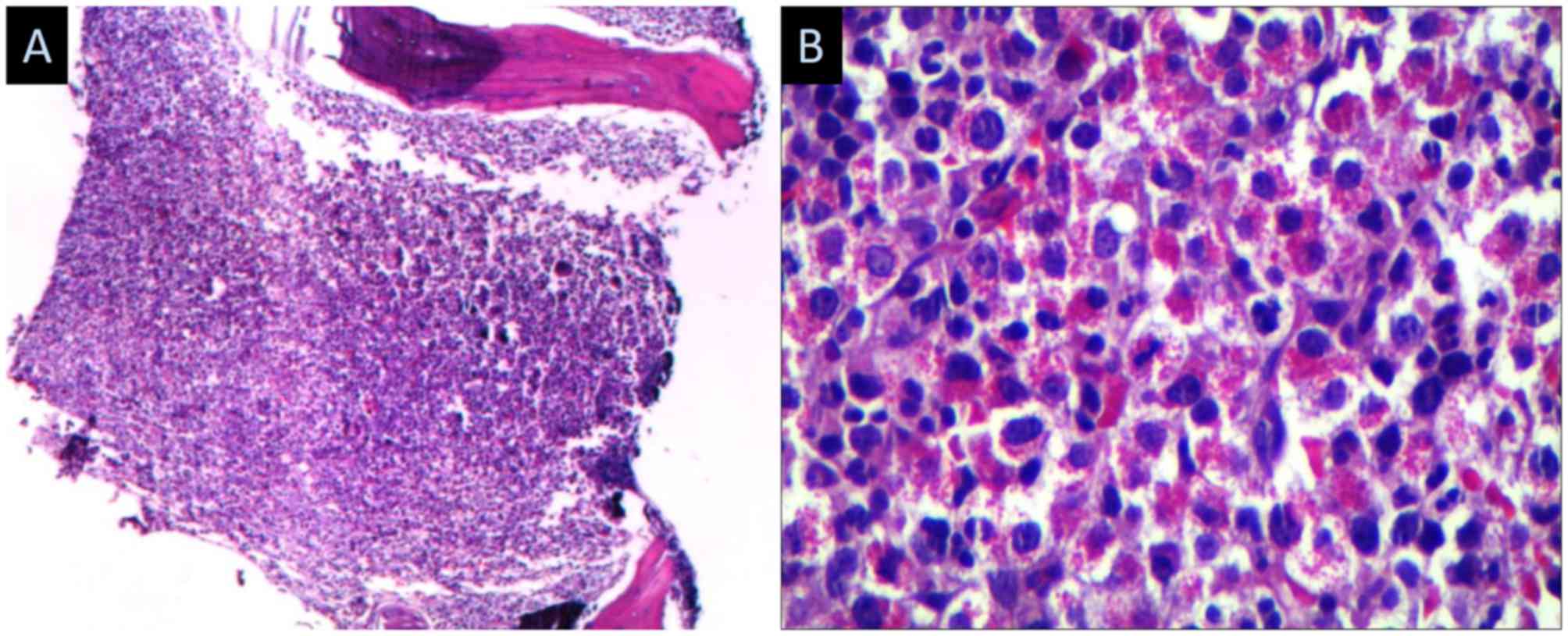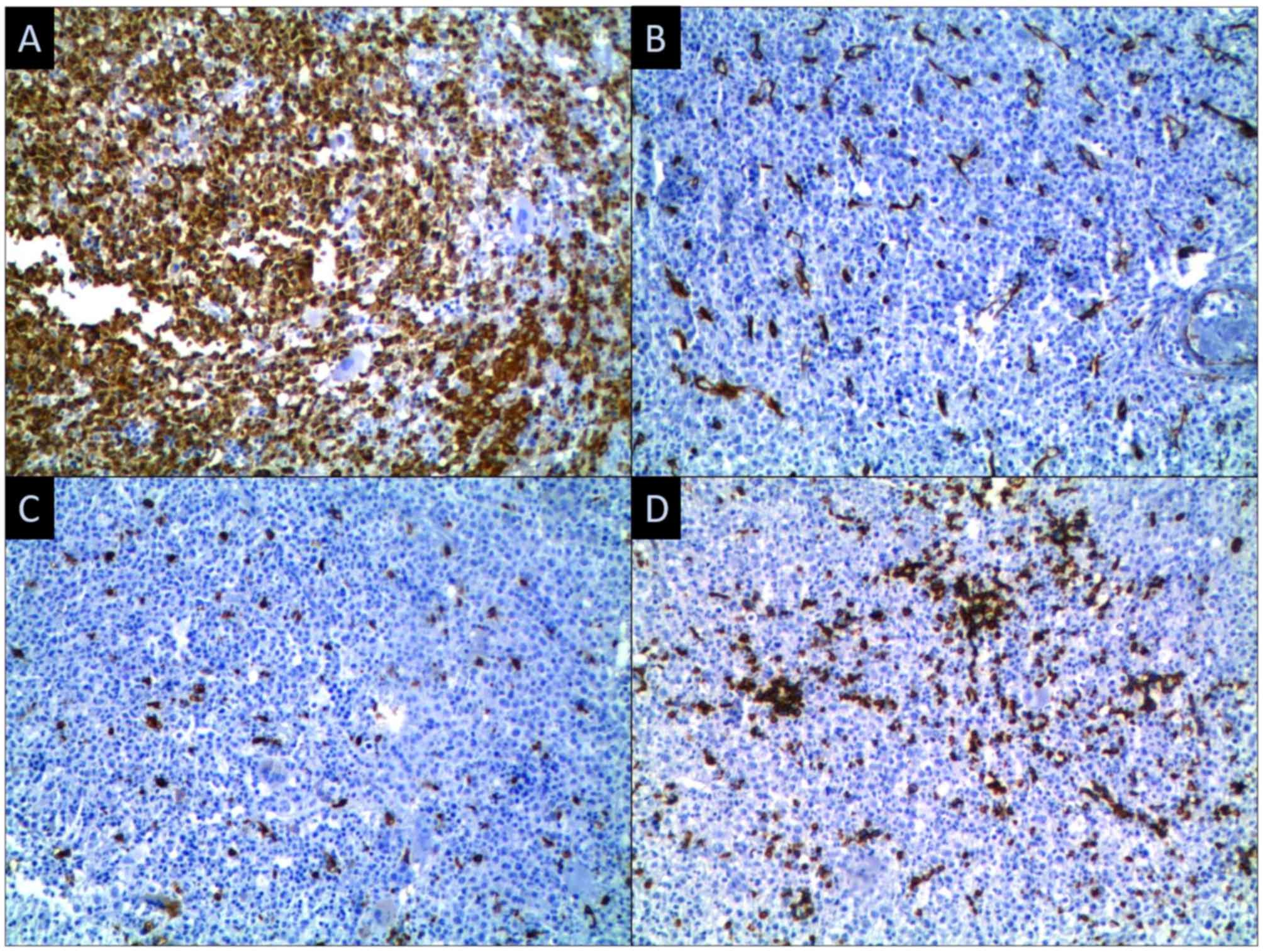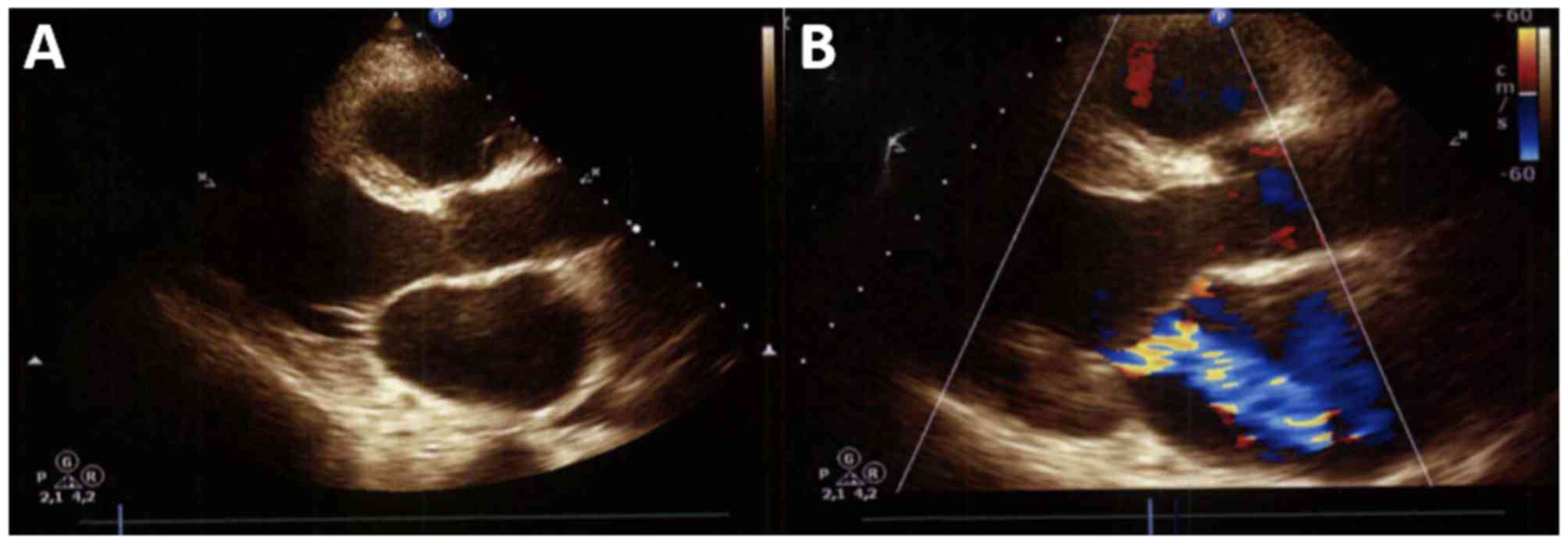FIP1L1‑PDGFRA fusion‑negative hypereosinophilic syndrome with uncommon cardiac involvement responding to imatinib treatment: A case report
- Authors:
- Published online on: May 21, 2018 https://doi.org/10.3892/mco.2018.1637
- Pages: 35-39
Metrics: Total
Views: 0 (Spandidos Publications: | PMC Statistics: )
Total PDF Downloads: 0 (Spandidos Publications: | PMC Statistics: )
Abstract
Hypereosinophilic syndrome is a rare, chronic hematological disease characterized by a persistently elevated eosinophil count exceeding 1.5x109/l, following the exclusion of other potential etiologies. The systemic involvement of the disease causes tissue damage through eosinophil infiltration, and may affect various organs; cardiac complications are observed in 50‑60% of cases, which are predominately attributed to endomyocardial fibrosis. The treatment is based initially on determining the presence of the FIP1L1‑PDGFRA fusion. Patients with positive results for this mutation tend to achieve a complete response with imatinib treatment, which is thus the first line of treatment for this condition. However, patients who are negative for this mutation initially undergo treatment with corticosteroids. This study reports the case of a male 53‑year‑old patient diagnosed with hypereosinophilic syndrome in 2012, with negative results for the FIP1L1‑PDGFRA mutation, and persistently high eosinophil levels, despite receiving the second line of standard treatment for this condition with hydroxyurea, and having already used corticosteroids without success. At the time of admission, the patient presented with acute decompensated heart failure due to severe mitral regurgitation, without any evidence of prior myocardial fibrosis or restrictive cardiomyopathy, and without suggestion of an associated ventricular hypertrophy. This clinical presentation is uncommon, as valvular involvement usually appears in the third stage of the development of cardiac involvement, and is usually associated with fibrosis and thrombotic events. Alternative therapeutic possibilities were evaluated due to the significant progression of the disease, and it was decided to attempt the use of imatinib, despite its use being preferably recommended for FIPIL1‑PDGFRA‑positive patients. The patient exhibited an evident and immediate response to imatinib, with normalization of the eosinophil count within 24 h of the first dose, which was maintained for at least the next 19 months. This clinical presentation is uncommon, as patients negative for FIPIL1‑PDGFRA fusion do not frequently respond to imatinib treatment, and symptomatic heart failure usually appears in the third stage of disease progression.












